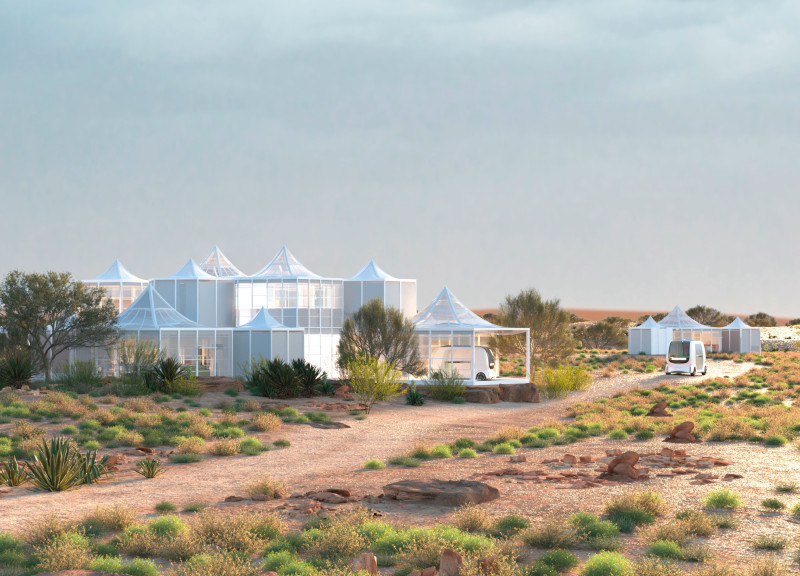5 key facts about this project
At the heart of the design is a clear intention to foster community engagement. The layout facilitates interaction among its users, promoting a sense of belonging and inclusivity. The project incorporates open spaces that encourage social gatherings, blending seamlessly into the urban fabric. This spatial organization not only enhances the utility of the building but also strengthens the connections among occupants, which is increasingly essential in contemporary architecture.
The materials selected for this project reflect a careful consideration of both environmental impact and aesthetic quality. Predominantly featuring materials such as low-carbon concrete, reclaimed wood, and glass, the design seeks to echo the surroundings while prioritizing sustainability. The use of low-carbon concrete minimizes the project's carbon footprint, while the reclaimed wood adds warmth and texture. Glass elements invite natural light to permeate the interiors, reducing the need for artificial lighting and enhancing the overall atmosphere within the spaces.
Architectural details reveal a meticulous approach to design. The facade utilizes a rhythmic interplay of solid and transparent elements, creating visual interest while allowing for dynamic interactions between the interior spaces and the exterior environment. This layering not only serves functional purposes but also establishes a contemporary identity for the structure, which aligns with the surrounding architectural language. Moreover, terraces and green roofs introduce a biophilic element, promoting biodiversity and integrating nature into urban life.
Unique design approaches are evident throughout the project. The emphasis on passive design strategies, including orientation for optimal sunlight exposure, natural ventilation systems, and thermal mass, underscores a commitment to energy efficiency. This approach not only addresses immediate environmental concerns but also reflects a broader understanding of architecture’s role in mitigating climate change.
Landscaping complements the architectural form, featuring native plants that require minimal irrigation and promote local wildlife. Pathways meander through the site, inviting inhabitants to explore while emphasizing an environmentally conscious design ethos. Such careful landscape planning enhances the overall experience of the space, merging the boundaries between indoor and outdoor environments.
In summary, this architectural project convincingly integrates form and function, reflecting a progressive approach to community-oriented design while remaining mindful of its environmental responsibilities. It is crafted with an understanding of users’ needs and desires, demonstrating that thoughtful architecture can indeed enhance quality of life. Readers are encouraged to delve deeper into the architectural plans, sections, and designs to fully appreciate the nuances of this exceptional project and explore the various architectural ideas that informed its development. Engaging with the presentation may provide further insights into the careful considerations that shaped this meaningful architectural endeavor.


























